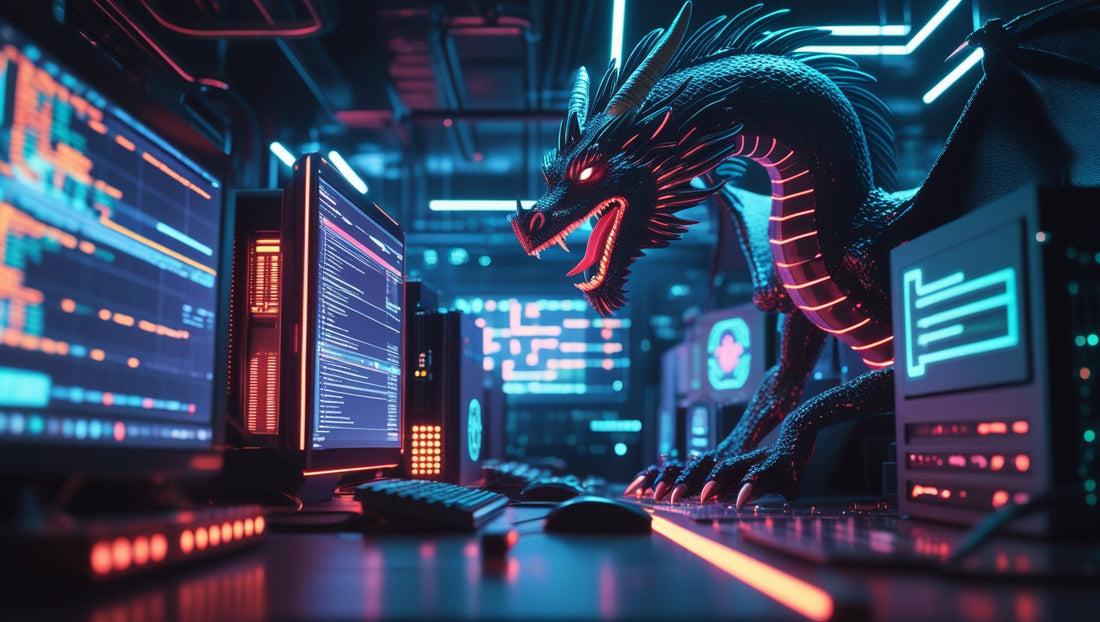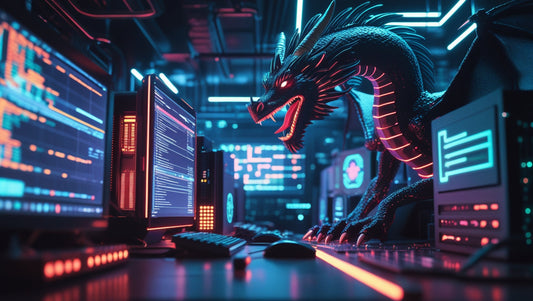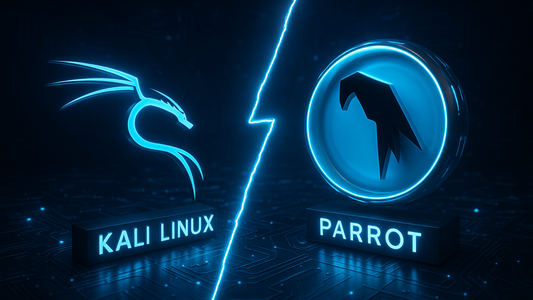
AI in Cybersecurity: Revolution or Evolution?
Partager
AI in Cybersecurity: Revolution or Evolution?
The intersection of artificial intelligence and cybersecurity has become one of the most debated topics in the tech industry. As cyber threats grow more sophisticated and attack vectors multiply, organizations worldwide are turning to AI-powered solutions to defend their digital assets. But are we witnessing a revolutionary transformation or a natural evolution of existing security practices?
The answer, as with most technological advances, is nuanced. AI is simultaneously revolutionizing certain aspects of cybersecurity while representing a logical evolution in others. Let's explore both perspectives and understand how this powerful technology is reshaping the cybersecurity landscape.
The Revolutionary Impact of AI in Cybersecurity
1. Speed and Scale of Threat Detection
Traditional cybersecurity approaches relied heavily on signature-based detection systems that could only identify known threats. AI has revolutionized this by enabling:
- Real-time threat analysis across millions of data points simultaneously
- Pattern recognition that identifies previously unknown attack vectors
- Automated response systems that can react to threats in milliseconds
- Predictive threat modeling that anticipates future attack patterns
This represents a fundamental shift from reactive to proactive security measures, something that was impossible with traditional methods.
2. Behavioral Analytics and Anomaly Detection
AI has introduced unprecedented capabilities in understanding normal vs. abnormal behavior:
- User behavior analytics (UBA) that can detect insider threats
- Network behavior analysis identifying subtle indicators of compromise
- Automated baselining that continuously learns what "normal" looks like
- Zero-day threat detection without requiring prior knowledge of the attack
3. Intelligent Automation and Response
Perhaps the most revolutionary aspect is AI's ability to not just detect but respond:
- Automated incident response that can contain threats without human intervention
- Intelligent threat hunting that follows complex attack trails
- Self-healing systems that can automatically patch vulnerabilities
- Adaptive security policies that evolve based on threat landscape changes
The Evolutionary Perspective
1. Building on Existing Foundations
AI in cybersecurity isn't starting from scratch 94it's enhancing established practices:
- Enhanced SIEM capabilities making log analysis more effective
- Improved endpoint protection building on traditional antivirus concepts
- Advanced firewalls that incorporate AI for better decision-making
- Sophisticated vulnerability management systems
2. Gradual Integration Process
The adoption of AI in cybersecurity has been evolutionary:
- Phase 1: Rule-based systems with simple automation
- Phase 2: Machine learning for pattern recognition
- Phase 3: Deep learning for complex threat analysis
- Phase 4: AI-driven autonomous security operations
3. Human-AI Collaboration
Rather than replacing human expertise, AI is evolving to complement it:
- Augmented analysis helping analysts make better decisions
- Reduced false positives allowing humans to focus on real threats
- Enhanced threat intelligence providing context for security decisions
- Skill amplification making junior analysts more effective
Current Applications of AI in Cybersecurity
Threat Detection and Prevention
Machine Learning Algorithms are being used to:
- Analyze network traffic patterns
- Identify malicious code behavior
- Detect phishing attempts in real-time
- Recognize advanced persistent threats (APTs)
Example: AI systems can now detect subtle changes in network traffic that indicate a potential breach, even when the attack uses legitimate protocols and tools.
Incident Response and Forensics
AI-powered tools are transforming incident response:
- Automated evidence collection and analysis
- Timeline reconstruction of security incidents
- Root cause analysis for security breaches
- Automated report generation for compliance
Vulnerability Management
Intelligent vulnerability assessment includes:
- Automated scanning and prioritization
- Predictive vulnerability analysis
- Risk-based vulnerability management
- Automated patch deployment
Security Operations Centers (SOCs)
AI is revolutionizing SOC operations through:
- Automated threat triage and prioritization
- Intelligent alert correlation
- Predictive maintenance for security infrastructure
- Automated playbook execution
The Challenges and Limitations
1. Adversarial AI
As AI becomes more prevalent in cybersecurity, attackers are developing countermeasures:
- AI poisoning attacks that corrupt training data
- Adversarial examples designed to fool AI systems
- Model extraction attacks that steal AI algorithms
- Evasion techniques that bypass AI detection
2. False Positives and Negatives
AI systems still struggle with:
- Context understanding leading to false alarms
- Subtle attack variations that evade detection
- Balancing sensitivity vs. accuracy
- Explainability of AI decision-making processes
3. Skills Gap and Implementation
Organizations face challenges in:
- Finding qualified AI security professionals
- Integrating AI with existing security infrastructure
- Understanding AI capabilities and limitations
- Maintaining and updating AI systems
The Future Landscape
Emerging Trends
Quantum-AI Cybersecurity: Preparing for quantum computing threats with AI-enhanced quantum-resistant encryption.
Autonomous Security Operations: Fully automated security operations centers that can handle incidents without human intervention.
AI-Powered Threat Intelligence: Real-time, global threat intelligence sharing powered by AI analysis.
Personalized Security: AI systems that adapt to individual user behavior and organizational needs.
Industry Predictions
Experts predict that by 2030:
- 80% of cybersecurity operations will be automated
- AI will be essential for managing the complexity of modern IT environments
- Human analysts will focus on strategic and creative security challenges
- AI vs. AI battles will become the norm in cybersecurity
Practical Implications for Organizations
For Security Professionals
- Skill Development: Focus on understanding AI capabilities and limitations rather than competing with them.
- Career Evolution: Transition from reactive security analysis to proactive threat hunting and AI system management.
- Continuous Learning: Stay updated with AI advances and their cybersecurity applications.
For Organizations
- Strategic Planning: Develop AI-first security strategies that integrate with existing infrastructure.
- Investment Priorities: Balance AI tools with human expertise and traditional security measures.
- Risk Management: Understand that AI introduces new risks while mitigating existing ones.
Conclusion: Revolution AND Evolution
The truth is that AI in cybersecurity represents both a revolution and an evolution. It's revolutionary in its ability to process vast amounts of data, detect unknown threats, and respond at machine speed. It's evolutionary in how it builds upon decades of cybersecurity knowledge and practices.
The most successful organizations will be those that recognize AI as a powerful tool that enhances rather than replaces human expertise. They'll invest in AI capabilities while maintaining strong foundational security practices and developing their teams' skills to work effectively with AI systems.
As we move forward, the question isn't whether AI will transform cybersecurity 94it already has. The question is how quickly organizations can adapt to this new reality and leverage AI's power while managing its risks.
The future belongs to those who can harness AI's revolutionary capabilities while respecting the evolutionary nature of security practices. In this new landscape, tools like AI assistants for cybersecurity professionals become not just helpful, but essential for staying ahead of increasingly sophisticated threats.



